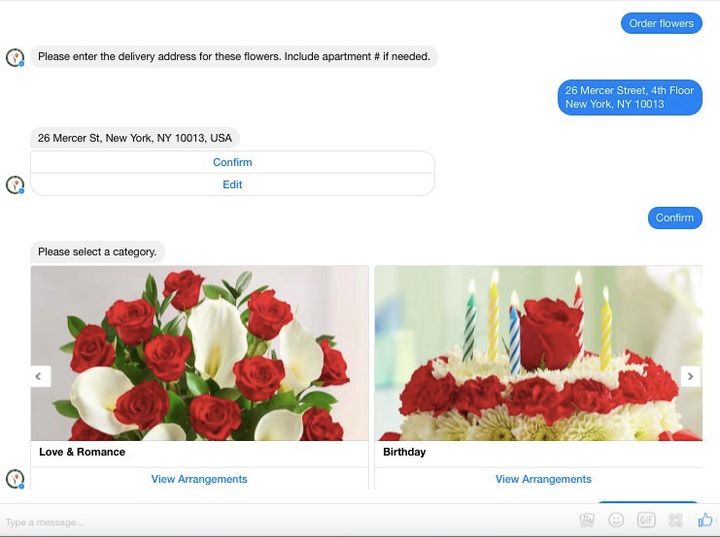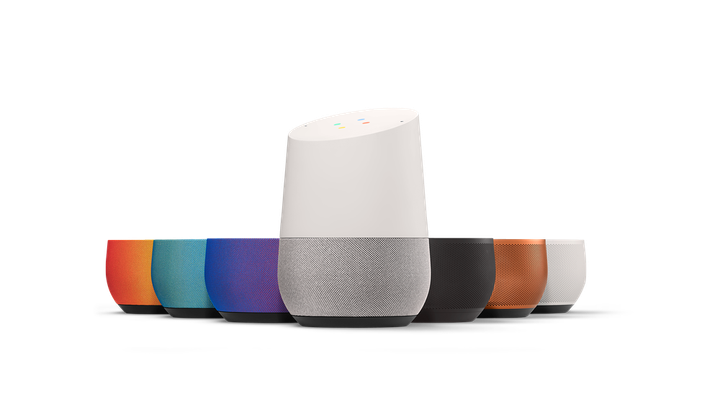As leading technology companies mash together new services, platforms, and capabilities, brands can find the signal in the noise—and make smart new investments—by understanding what makes sense for the user.

This year, Amazon, Apple, Facebook, and Google have advanced their respective platforms’ capabilities by adding new services, each one arguing that the additions improve the overall user experience. Despite the companies’ claims, sorting through the noise and identifying new products that are worthy of investment isn’t an easy task for brands.
So far this year we’ve seen exciting improvements to push notifications; Facebook learn from WeChat’s playbook and add bots; Google attempt to compete directly with Amazon’s Alexa; and Apple make Siri smarter by bringing in third-party services. For marketers, the two most important dimensions along which to analyze these evolutions are whether they meaningfully improve user experiences, and the scale of the platforms they impact.
1 // The lines between apps and web are increasingly blurred
As computing and mobility have become ubiquitous, brands must be prepared to engage their users everywhere they are.
One example of this ubiquity is push notifications: they’ve evolved from simple notices for native mobile apps into multimedia interactive experiences for apps and websites of all kinds. For websites, Google offers push through Chrome on mobile and desktop, and Mozilla does the same for Firefox. Apple has enabled push notifications in desktop Safari, but has yet to bring the feature to their mobile devices, or allow for Chrome or Firefox to implement it because of the limitations iOS forces on third-party browsers. When it comes to multimedia and interactivity in push notifications, Android has historically been the early innovator, but Apple’s recent release of rich push in iOS 10 closes the gap. I hope we see them catch up with mobile browsers and web push for iOS as well.

When used properly, web push is as valuable to brands and users as push notifications sent from native mobile apps, and becomes part of an improved customer journey. However, web notifications need to be handled with the same respect for the user as any other type of push notification. A sophisticated CRM marketer should be using tools that can not only communicate across all platforms and messaging mediums, but also be aware of user interactions in each of those places so that he or she can orchestrate a single coherent conversation with each of their users.. As a bonus for early adopters, marketing teams that begin web push efforts today will have a unique first-mover advantage to master the channel and benefit from early user attraction to the novelty and the absence of channel fatigue.
2 // Chatbots could become a key interaction method over time
With Facebook’s addition of bots—interactive chat apps built to run inside its Messenger platform, where one billion users are accustomed to sending and receiving messages every month—we’re just beginning to test what kinds of products and services are best suited (or newly possible) through a conversational interface.
Today, users can interact with bots to converse with Starbucks’ “The Real PSL”, order from 1-800-Flowers.com, or discover Netflix suggestions from the Huffington Post. While these bots all work well, it’s still too early to determine if, or how soon, the bot ecosystem will start delivering real value to consumers and brands.

Facebook Messenger bots evolved from a need to streamline customer support and overall service triage. This is something that customers have tried to use Twitter and Facebook Pages to accomplish for some time, but is much better handled in a private chat context with automation from bots. However, regardless of use case, the evolution of bots to be a faster, more intelligent, and customer friendly user experience vehicle is key to unlocking value.
One way bots can really shine is by taking advantage of the entire history of a user’s interactions with the brand to improve future conversations and streamline interactions. Understanding context and user profiles and making repeat behavior easier will make the chat interaction model stronger.
3 // Personal assistants are getting smarter & new entrants promise superior experiences
Voice has been hailed as the future of user interaction across a myriad of devices. Amazon, Apple, and Google all offer voice-activated digital assistants, with Amazon’s Alexa platform often touted as the leader.
While the ability to walk into a room and give commands to the Echo is impressive, many aspects of Alexa’s early feature set felt like it was about benefiting Amazon first, and the customer second (much like the Amazon Fire Phone’s weak differentiating features). However, Alexa has the most open platform of all of the voice assistants, which has resulted in a robust third party ecosystem for Alexa skills that are rapidly expanding the assistant’s capabilities.

Using Google Assistant (the rebranded and upgraded Google Now service), the Echo competitor Google Home will tie together all of the information people expect to get from Google in a voice-activated manner. Given the great user experience of Google Now as a predictive assistant on Android—due in part to its proactive recommendations—I am excited to see Google's entry into the voice assistant space push things forward.
The bottom line // It’s about consistency from start to finish
As platforms expand, brands must constantly evaluate new interaction options in an effort to assess the best place to invest their limited attention and resources. Chasing shiny objects can be detrimental to both the brand and the user. Striking the right balance—or the spot where user experience, regardless of platform preference, is beneficial to all involved—is key.
For example, for a commerce oriented bot experience to be great, users should be able to use a bot to order a recommended item, complete payment with an integrated wallet like Apple Pay, and then receive real time updates from a voice assistant or set top box as dinner makes its journey to the doorstep.
There are billions of people using mobile devices and messaging platforms every single day. A growing number are starting to interact with bots and voice assistants powered by AI. We're only at the beginning of understanding how they'll all work together and what their capabilities will enable. As we forge ahead, it's vitally important to keep in mind that the key driver of adoption and value is not shiny new toys or convenience for the brand, but genuinely fantastic user experiences for the customer.
